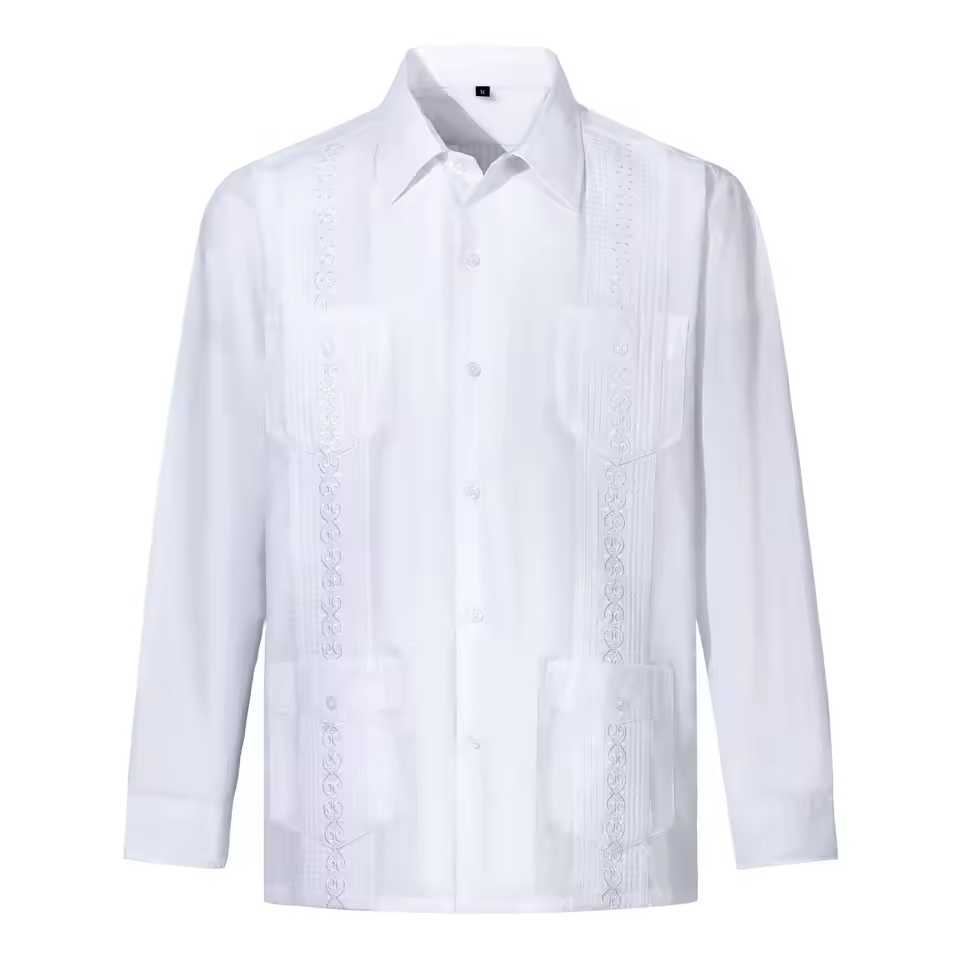The Basics of Shirt Fabric Care
Maintaining a clean shirt begins with understanding the basics of fabric care. Different materials require different approaches for optimal cleaning and longevity. Cotton shirts, for instance, can handle warmer water and more vigorous washing cycles compared to delicate fabrics like silk or linen, which need gentle handling.

To start, always check the care label before washing. It provides crucial information on washing temperatures, drying methods, and whether dry cleaning is necessary. Ignoring these instructions might lead to damaged fabrics or faded colors.
Next, separate your shirts by color and fabric type. This prevents color bleeding and ensures that each fabric gets the appropriate care. Whites, lights, and darks should be washed separately to maintain their brightness or depth of color. Additionally, heavier and sturdier fabrics can be washed together, while lighter, more delicate materials should have their own cycle.
Use a mild detergent suited for the shirt’s fabric. Harsh chemicals can break down fibers over time, so opting for a detergent labeled ‘gentle’ or ‘for delicate fabrics’ is a wise choice. Detergents with brighteners can keep white shirts looking pristine, but they should be used sparingly on colored garments.
Before washing, unbutton all buttons, including cuff and collar buttons, to prevent stress on the buttonholes. Lastly, turning shirts inside out before tossing them into the washing machine can help protect the outer surface from abrasion and fading.
By following these basic tips, you’ll help your shirts maintain their color, shape, and texture, keeping them looking clean and new for longer.
Pre-Treatment Tips for Stubborn Stains
When faced with a stubborn stain on a shirt, it’s vital to act quickly. The longer a stain sits, the harder it becomes to remove. Here are essential pre-treatment tips to handle those tough spots effectively:
- Blot, Don’t Rub: Gently blot any excess liquid with a clean cloth. Rubbing can spread the stain and embed it deeper into the fabric.
- Cold Water Rinse: Flush the stained area with cold water as soon as possible. This helps to lift some of the stain particles before they set.
- Stain Remover Application: Apply a stain remover that is appropriate for the fabric type. Be sure to follow the instructions on the product label. For a clean shirt, this step is crucial.
- Natural Alternatives: Consider using items like baking soda, vinegar, or lemon juice for mild stains and for those who prefer natural solutions.
- Test First: If using a new stain removal method, test it on an inconspicuous part of the shirt to ensure it doesn’t cause discoloration or damage.
- Soaking: For particularly stubborn stains, soak the shirt in a mixture of water and a small amount of detergent before laundering as usual.
Remember, the key to maintaining a clean shirt is not just in the washing but also in how you address stains before they go into the wash. Following these pre-treatment tips will boost your chances of getting rid of tough stains and keeping your shirts in pristine condition.
Best Washing Practices for Pristine Shirts
For a consistently clean shirt, use the best washing practices. Start by sorting shirts, not just by color but also by the dirtiness level. Wash heavily soiled shirts separately. Choose the washing cycle based on the fabric type. Use regular cycles for cotton and sturdy fabrics. Select gentle cycles for delicate materials. Avoid overloading the washer. This gives shirts room to move and clean evenly. Measure detergent correctly. Too much can leave residue, and too little may not clean well. For a clean shirt, try liquid detergent. It dissolves better in water than powder. When it comes to bleach, use it with caution. It is great for keeping white shirts bright but can damage colors. Lastly, add shirts to the washing machine inside out. This helps maintain color and reduces the risk of snags or pilling.
The Role of Water Temperature in Shirt Maintenance
When striving for a clean shirt, water temperature plays a critical role. Hot water can rid shirts of heavy stains but may cause shrinkage or color fading. To stay safe, use warm water for lightly soiled cotton shirts. It’s effective and less damaging. For delicate fabrics or any shirts with bright colors, cold water is best. It helps preserve fabric integrity and color vibrancy.
- Hot Water: Use for durable fabrics and heavy stains. Check the care label first. Avoid for colors that may run or delicate items.
- Warm Water: Ideal for cotton and everyday wear. Balances cleaning power with fabric care, less shrinkage risk.
- Cold Water: Best for delicate, bright, or dark colored fabrics. Prevents fading and maintains fabric quality over time.
Adjusting the water temperature to the needs of your shirt helps keep it in good shape. Always remember to read the label for the manufacturer’s recommendations to maintain a clean shirt appearance. Adjust settings on your washing machine accordingly for the best results.
Drying Techniques to Prevent Wrinkling and Shrinkage
Drying your shirts properly is as important as washing them correctly to keep them looking spotless. Here are some techniques to help prevent wrinkling and shrinkage, ensuring a clean shirt and a polished appearance.
- Shake Out Wrinkles: After washing, give your shirts a good shake. This can help minimize wrinkles.
- Opt for Low Heat: High heat can cause shrinkage. Use a low-heat setting when using a dryer.
- Dryer Balls: Add wool dryer balls. They help circulate air and reduce drying time.
- Remove Promptly: Take shirts out of the dryer as soon as the cycle ends. This will help prevent set-in wrinkles.
- Air Dry When Possible: If weather and space allow, hang your shirts outside. Sunlight and air help fabrics retain their shape and texture.
- Use Hangers: For indoors, hang shirts on hangers to air dry. This can help reduce wrinkles and maintain the shirt’s shape.
- Iron Damp Shirts: If you need to iron, do it when the shirt is slightly damp. This makes it easier to smooth out wrinkles.
- Avoid Over-Drying: Check your shirts periodically. Remove them from the dryer while they’re still slightly damp to avoid shrinkage.
By employing these drying techniques, you not only prevent damage but also make ironing easier and keep your shirts in their best condition. A clean shirt is not just about removing stains but also about how it looks and feels after your laundry routine. Consistent application of these methods will result in shirts that look freshly pressed and feel comfortable to wear.
Ironing and Folding for a Polished Look
A clean shirt not only needs to be stain-free and freshly washed, but it also requires proper ironing and folding for that sharp, polished appearance. Here’s how you can achieve an expert finish at home:
- Iron While Damp: Iron shirts when they are slightly damp. This is the best time because the heat from the iron dries the fabric and removes wrinkles more effectively. If the shirt has dried completely, use a spray bottle to lightly mist it with water before ironing.
- Correct Temperature Setting: Use the correct setting for your shirt’s fabric. Cotton shirts can handle a higher heat, while delicate fabrics like silk require a lower setting to avoid damage.
- Press Collars and Cuffs First: Start with the collar and cuffs. This frames the shirt and gives you a guide to avoid creases while you finish the rest.
- Smooth Movements: Glide the iron smoothly over the fabric. Don’t let it sit in one place for too long to prevent scorching. Ensure you iron between buttons rather than over them to keep their shape.
- Hang Immediately: Once ironed, hang the shirt promptly to prevent new wrinkles from forming. Use wide hangers to maintain the shirt’s shoulder shape.
- Fold for Storage: If space is tight, fold shirts carefully. Lay the shirt face down, fold the arms back, fold the shirt in thirds from the sides, and then fold from the bottom up.
Following these steps will not only help maintain a clean shirt appearance but will also extend the lifespan of your shirts, ensuring they always look their best.
Storing Shirts to Avoid Dust and Damage
Proper storage is essential to keep your shirts in top condition and extend their lifespan. Here’s how to store your shirts properly to avoid dust and damage and ensure they stay clean:
- Choose the Right Environment: Store your shirts in a cool, dry place. Damp areas can lead to mold, and heat can cause discoloration.
- Use Quality Hangers: Invest in good hangers. Avoid wire hangers that can deform the shape of the shirt. Wide, padded hangers are best.
- Button Up: Buttoning the top and middle buttons helps maintain the shape of the shirt while hanging.
- Give Them Space: Don’t overcrowd your closet. Shirts need space between them to breathe and stay wrinkle-free.
- Protect from Dust: Use garment bags to shield your shirts from dust, especially if you don’t wear them often.
- Avoid Sunlight: Keep shirts away from direct sunlight to prevent colors from fading.
- Drawer Storage: If you’re folding shirts, use drawer dividers to prevent them from becoming jumbled and wrinkled.
- Lavender Sachets: Place lavender sachets in your storage areas. They naturally repel moths and impart a pleasant scent.
Storing your shirts correctly will not only help maintain a clean shirt appearance but also reduce the time and effort you need to spend on maintenance. With these simple yet effective storage techniques, your shirts will remain spotless, fresh, and ready to wear.
 DIY Solutions for Common Shirt Stains
DIY Solutions for Common Shirt Stains
When trying to keep a shirt clean, it’s helpful to know some DIY stain removal solutions. Here are a few effective methods for common types of stains:
- Ink Stains: Start by placing a paper towel under the stain. Apply rubbing alcohol gently on top. The ink should transfer to the paper towel.
- Grease Stains: Dust a bit of baking soda on the grease. Let it sit to absorb the oil. Brush off the powder, then wash as usual.
- Red Wine Stains: Dab the stain with a cloth soaked in club soda. If available, sprinkle salt to draw out the moisture. Rinse with cold water.
- Coffee Stains: Blot up excess coffee with a towel. Mix a solution of water and vinegar. Apply the mixture to the stain, then rinse.
- Perspiration Stains: Create a paste of baking soda and water. Rub onto the yellowed areas. Leave for an hour, then wash.
These DIY techniques can save a shirt from a stain nightmare. For a clean shirt, always remember to test a small area first. This ensures that the fabric’s color and integrity stay intact. By using everyday household items, you can tackle stains quickly and efficiently, maintaining your shirt’s life and appearance.


